Arcerion
Confederated Provinces of Arcerion Arco Confederacy | |
|---|---|
|
Flag | |
| Capital and largest city | Kurst |
| Official languages | Ænglish |
| Ethnic groups |
|
| Religion |
|
| Demonym(s) | Carnish |
| Government | non-partisan Republican which is considered a semi-direct democracy |
| Iain Donnegal | |
| Martha Atherington | |
| Legislature | Arcer Senate |
| Arcer Senate | |
| Individual Provincial Congress | |
| Former colony, Independence Granted | |
| Population | |
• 2019 estimate | 89,863,541 |
• Density | Template:Convinfobox/sec2 |
| GDP (nominal) | estimate |
• Total | $2.957 trillion |
• Per capita | $52,301 |
| Currency | Arcer Pound (A&P) |
| Driving side | right |
| Internet TLD | .arc |
Arcerion, officially the Confederated Provinces of Arcerion, is a country in central Cronan. It shares land borders with Kelekona to the North, as well as Titechaxha. It covers an area of XXX km2 (389,730 sq mi) which includes the islands of Foxhey as well as several smaller islands. The country has a population of almost 90 million, the vast majority of which is situated within the country's coastal regions but with strong agricultural towns through the central highlands. It is a highly centralized republic comprising 4 major governates, and almost forty minor provinces. The national capital is Kurst, the country's second largest city and economic centre. Other major cities include Kinnaird, Craigfearn, Dalfearn, Oakham, Presdale, Easthampton, and Dunborough.
Etymology
History
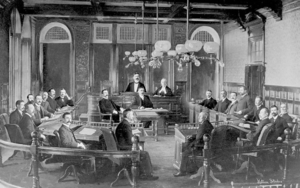
Gained economic and interior governance independence in the 1880s. Full independence just before the Great War.
Economy and Infrastructure
Economy

The Arcer economy can be considered to be robust, and is appraised by most to be a mix market economy, although some government regulators wish to see a greater emphasis on command-style economic policies to protect Arco interests. This leads to the population of ~89,000,000 having a GDP per capita of $52,301, and a total national GDP of $2.957 trillion. Economists would consider the Arcer economy to be Agrarian/Industrial, with most pointing out that Arcerion can't seem to decide if it wants to fully embrace industry or retain its agricultural and traditional economic practices. The Arcer economy revolves predominantly around its exports, and is an export-focused economy, being almost self-sufficient. Its main exports are usually defined by the governate that they emanate from, with each of the four governates having a distinctly different economic intake and output. Foxhey, the smallest of the Arco governates, has a mostly agrarian economy. It also boasts a healthy fishing sector, which thrives during the Malentine Sea's spring and summer. Characterized by its traditional economy, the small towns and villages export wheat, barley, and other grain crops. It is ranked as one of the most productive economies from a provincial-standpoint in Arcerion. The second-smallest economy comes from Norham, in the Northeast. Due to political instability along the Northern Arco border, Norham is essentially a slightly larger version of Foxhey. Small cottage farms and local market industry define its exports, and its lone port town, Norpool Cross, is the most Northern port in the Malentine, making it a central hub for imports to much of the Upper Peninsula. The two giants of the Arcer economy, the twin governates of Northlea and Moorden can at best be contrasted by their cities and rural areas. In Northlea, the cities are bustling centers of market economic power, with stock exchanges, banks, and financial institutions serving as the white-collar backbone of the governate's economy. Beyond the cities, Northlea's vast size and rolling plains are covered in patchwork industrial farms, with government subsidies on farming machinery and equipment allowing it to become the breadbasket of the South-Eastern Peninsula. This serves in direct contrast to Moorden. Moorden's large mountains are home to some of Crona's largest industrial mining facilities, and the governate's capital, Easthampton, is a massive industrial city with large manufacturing centers and raw ore processing facilities, giving it the nickname 'Steelhampton.'
Economic Sectors
| Sector | % of Economic Output |
|---|---|
| Mining | 32 |
| Agriculture | 34 |
| Fishing | 12 |
| Banking/Finance | 11 |
| Manufacturing | 7 |
| Tourism | 2 |
| Hydroelectric | 2 |
Transportation and Infrastructure
The keystone of Arcerion is the Arco National Railway Service (ANRS). Founded shortly after economic independence from Carna, the ANRS serves as the lifeline for much of the country's rural communities for the efficient transportation of goods and services. The ANRS is also one of the largest employers in the Arco public sector, and with dozens of rail lines operating across all four governates, it is a critical piece of infrastructure. Within cities, the ANRS has several smaller, governate-specific or province/city-specific rail lines including light rail systems for commuting, although these are usually prevalent in more affluent cities such as Kurst or Kinnaird. The ANRS itself is managed by the Ministry of the Interior, under the Department of Infrastructure. Maintenance of rail lines and engines is one of the largest sectors of the Department's budget, surpassing road maintenance year-on-year. The road networks in Arcerion are classified into three categories, Federal Highway Systems (the Transnational), governate highways and thoroughfares, and local streets or surface roads. In general, the federal government maintains the Transnational which connects all the major governate cities, and is again politically managed by the Department of Infrastructure. Governate highways are usually dependent on the governate respectively, with roads in Northlea for example being better maintained closer to the capital than in the rural Northern stretches. Individual provinces within the governates also have a difficult time repairing roads during the North's harsher winter, with snow clearance and removal services being a provincial responsibility.
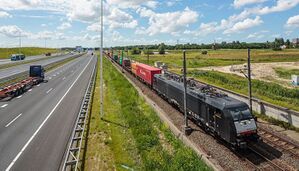
For air travel, most major cities boast large airports, the three largest being in Kurst, Kinnaird and Easthampton. The national airline, Air Arco operates a number of domestic flights to connect the medium-sized airports, from the smallest airport on Foxhey to the most Northern in Northlea. Additionally, it also provides intra-Crona flights regularly through Kurst and Kinnaird, with travellers being able to reach destinations in neighbouring countries or across the Malentine/Songun seas. Internationally, Air Arco services flights to Carna and Urcea regularly.
Geography
Politics and government
Confederate Parliament
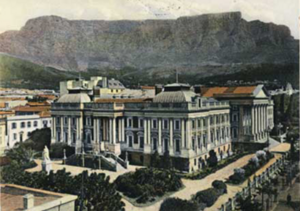
The Confederate Parliament is a democratically-elected indirect democratic body. Although regular votes federally occur every 3-4 years, it is not unusual in times of national crisis for the Parliament to grant the Prime Minister a year extension to calling an election. Comprised of Members of Parliament (MPs) from each Province, it also has Caucuses for each Governate, as well as several major political factions. The creation of parties is strictly forbidden, as this is believed to create sectarianism within the government and slow national progress. However, as a workaround candidates will often identify with voting Blocs, and these generally fall into one of five categories (Conservative, Liberal, New Liberal, Environment, Confederate Governate). Each Bloc has no set mandate, constitution, or governing set of rules as that would constitute a party. However members often will shift between Blocs depending on their province's stance on certain issues, allowing for a greater sense of freedom. For example, fiscally citizens of Kurst are majority conservative when it comes to their fiscal beliefs. But from a social perspective they may find themselves more liberal, allowing their MP to shift between voting Blocs as needed to represent their interests, and without the need to toe a Party line and jeopardize a career in politics. While career politicians are not uncommon, politics is not generally seen as a long-term career or profession. MPs usually will sit for 3-4 elections (average 12-16 years in Parliament). This allows for a generally frequent influx of new candidates and MPs, ensuring that the modern voice of Arcerion is actually championed by its elected representative. MPs are also organized onto Boards and Committees depending on their respective interests or backgrounds. This is the responsibility of the Deputy Minister, as part of their portfolio is the management of the day-to-day conduct of governance. They see to Internal Affairs, and while subordinate to the will and direction of the Prime Minister, generally have a high level of autonomy when compared to other nation's equivalents. The Prime Minister however, will focus on foreign affairs, macro-level political machinations and plans, as well as assigning and management of Ministers and federal-level organizations versus the Parliament's functioning itself.
Governates
Arcerion's governates form the largest political bureaucratic level below the federal government. Characterized by their different economies and geography, but shared language and beliefs, the governates all have representatives, best described as liaisons that are additional seats in the Confederate Parliament.
Northlea

Nothlea is the most populous province in Arcerion, and also geographically the largest. It also is partially home to the capital, Kurst, although it falls into its own quasi-governate area known as the Kurst Capital Region (KCR). The provincial capital, Kinnaird, is the largest city in Arcerion and is the cultural capital of the Cronan nation. It was the third Carnish settlement that started Arcerion, and was the de facto capital up until the country's full independence from Carna before the Great War. Northlea has several smaller provinces, from the highly urbanized centres around Kinnaird and its suburbs in the Greater Kinnaird Urban Area (GKUA) to the rural communities in the far reaches of Northlea along the border with Titechaxha. Northlea is known for not only its vast agricultural outputs, but also the old financial institutions in Kinnaird such as the banks and investment centres that compete regularly with their counterparts in Kurst for who is the true financial capital of the nation.
Moorden
Norham
Foxhey
Kurst Capital Region (KCR)
The Kurst Capital region is the National Capital's governate-equivalent administrative area that extends for 4-9km surrounding the capital city of Kurst. Designed to reflect the special economic, political, and cultural significance of the second Carnish settlement (the original being Chester-on-Moore) that turned into Arcerion's capital, the KCR is governed by the Grand Mayor of Kurst, who also is the city's most senior elected official at the municipal, provincial, and governate-levels, and reports to the Deputy Minister of Arcerion. Kurst is known as the second-oldest city in Arcerion, and is home to stunning historical buildings of Carnish architecture, as well as several of the best universities in Southern Crona, such as the Carnish Anglican University, Royal Arcerion Institute for Engineering, as well as the Royal Arcer Military College (more commonly referred to as 'The Fort'). In addition to many educational and post-secondary institutions, Kurst also has one of the larger white-collar business sectors, with te city's financial and banking district have it listed as one of Crona's Top 5 'banking cities.'
Provinces
Government Organizations
Arcer National Space Exploration Agency (ANSEA)
Arcerion Foreign Office
Arcerion Ministry of Defence
Arcerion Ministry of the Interior
Department of Public Safety and National Security (DPSNS)
Military
The Arcer military is comprised into four main elements, all subordinated under National Defense Headquarters (Kurst), also known as NDHQ(K). It is comprised on the Army, Air Force, and Navy. All three of the main services are subordinated under the Joint Operational Command Committee (JOCC), which has an administrative and liaison relationship with the fourth element, the Arcer Special Operations Command (ASOC). ASOC is subordinate to the Minister of Defence, however its units and personnel are drawn from each of the three respective armed services.
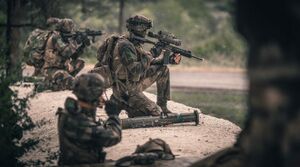
Army
The Army, by far the largest service, has a focus on hybrid warfare, with a large push recently to emphasize its strengths as a middle power. Loitering munitions, MRAP-type vehicles, increased and more resilient C2 infrastructure, combined with an influx of drones, ISR (man-portable and vehicle-based), as well as investments into indirect fires have made the Arco ground forces flourish in a modern renaissance. Traditionally the favourite of the three main armed services, the Army may not enjoy the largest budget, as the Navy and Air Force capital acquisitions often vastly outpace their land-based peers, but the Army still hast the most uniformed members and the greatest global footprint. Organized around supporting decentralized combat teams (reinforced infantry companies or battalions with attached enabling units), the Arcer military benefits from a strong, well-educated NCO corps, as well as an officer corps that often can enforce ruthless meritocracy, which some may sometimes negatively impacts the organization. However, the Army is plagued by shortages of volunteers, as the Confederate Parliament refuses to conscript or draft young men and women into the armed services, deeming national service as being a privilege to be chosen, not enforced. As such, manpower shortages have a cyclical effect on the organization, causing higher rates of burnout and attrition amongst senior members. With the 2022 Confederate Memo on Defence, the Army was allocated greater purchasing power for itself in terms of procurement of capital projects. Looking to replace the ageing second-line vehicle fleet, as well as life cycle and upgrades to its rotor-lift capabilities, this will help keep the Army relevant for the next decade or more.
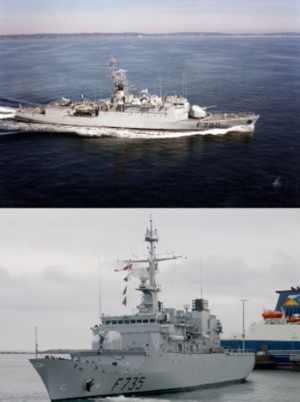
The Navy is the armed service with the largest budget but perhaps the smallest operational footprint abroad. The Arcer Navy, officially known as the Arcerion Naval Service, represents the second oldest of the three armed services behind the Army (formed from colonial militia units upon early independence in the 1880s). Experts would describe the Arco surface and sub-surface fleet as a green-water Navy, with aims to expand to blue-water operations and increase its ability to conduct expeditionary activities. Considered 'green-water' as it is comfortable operating in the littoral zones of the Malentine and Songun Seas, it has the ability to conduct limited operations in both size, scale and operational scope in the Polynesian Sea, Ocean of Cathay, and the Odoneru Ocean. Doctrinally, the Navy has been focused on traditional roles existing from legacy white papers and defense memos, but recent changes with the 2022 Confederate Memo on Defence placed a much greater emphasis on what the government refers to as 'three core capabilities,' these being: anti-submarine warfare (ASW), support to expeditionary operations (EXOPSUP), and finally undersea warfare (USW). This is in alignment with the government's push for a future force as a recognized global 'middle power,' emphasizing strengths where it can and limiting weaknesses with technology.
The Navy's core is the surface fleet, centered around two main ship classes, both of which are frigates. The aging Seaforth-class frigate was introduced in the 1980s, and lifecycle upgrades of the resilient class have retained its use some forty years later. However the newer replacement, the Kilkenny-class sees an increased air complement (an additional airframe) as well as a new suite of C2, ASW, and surface radar systems. An emphasis on Frigates, both used in the general-purpose role as well as the anti-submarine role is reflective on Arcerion's proximity to the Malentine and Songun seas. For greater expeditionary deployments, the destroyer fleet, coupled with limited availability of its one fleet carrier and limited landing ships allowed the Arco Navy the ability to patrol its own sea lanes as well as project limited surface power beyond its own waterways.
Critically, it is focused on protecting the Warrington Strait, a key naval chokepoint between Arcerion and Istrenya. This serves as the gateway to the Malentine, meaning that a permanent patrol and surface force is present to ensure it remains open and free for trade, as well as responding to search-and-rescue requests as needed.
The Navy also operates several overseas Joint Bases and naval Stations, the most important of them being Joint Naval Station Leighton-Lennoix, located in the Polynesian Sea, near Sarolasta.
Air Force
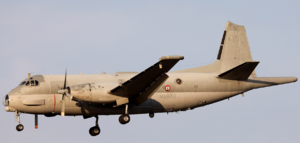
The Arcer Air Force (AAF) is the smallest of the Armed Services but plays the largest role in terms of support domestically to natural disasters as well as maintaining the movement of equipment and personnel across the globe. At this time, it is going through a transitory phase, as it was originally part of the Navy, being born from ship-based patrol aircraft and seagoing search-and-rescue squadrons. As such, the emphasis for fixed-wing aircraft has traditionally been on maritime patrolling, anti-submarine warfare, and bomber interdiction. This only reflects part of the Air Force's storied history, however. The rotor wing assets owned by the AAF have consistently contributed to Arcerion domestic and expeditionary operations, and the Army's recent changes as part of the 2022 Confederate Memo on Defence have resulted in an increased reliance on helicopters for MEDEVAC, close air support, as well as troop lift to support vertical envelopment. The Air Force is split into five distinct branches, those being Air Forces (Land), Air Forces (Maritime), Air Forces (Training), Special Air-Ground Operations, and Air Force Staff & Training. By doing this, the Air Force allows itself the flexibility to support Arcer operations domestically, and abroad.
The Air Force also has the mandate to patrol Arcerion's coastline as well as its own airspace. With the end of the Varshan conflict it has committed aircraft to supporting the humanitarian efforts that are ongoing with airlifts of supplies and aid to those in need. The Air Force uses these opportunities to practice its expeditionary capabilities, such as the mass movement of men, weapons, and equipment far distances to allow it to continue supporting actual ongoing operations. Maritime Patrolling also allows for an increased ability to conduct either civilian search-and-rescue or Combat Search and Rescue (CSAR) of which the Air Forces (Maritime) command have been training for since the 1950s.
The Special Operations Aviation units within the Air Force are usually seconded to the Army, as they provide its immediate ability to conduct raids and infiltrate/exfiltrate commandos with ease. Due to their slightly detached nature, the Special Operations Aviation units often can be left fighting for more budgetary constraints as ASOC continues to demand more and more from its land and maritime units while expecting the Air Force to consistently provide effects.
Expeditionary Operations

The Arcer military, while primarily geared for national defense and domestic operational support to civil authorities, also has an extensive expeditionary focus that covers a broad spectrum of operational activities, including foreign internal defense, peacekeeping, and natural disaster relief operations. While expeditionary warfighting is a core capability of the nation's armed forces, these tasks are generally undertaken by ASOC, with support from the Arcer Air Force and Navy. The Navy's emphasis on green-water operations, those being in the Malentine and Songun seas have left it under-equipped for extended blue-water operations or for long-distance patrolling, aside from show-of-force or single frigates or destroyers patrolling. To note, the Arcer Navy's only standing expeditionary deployment group in the Northern Polynesian Sea (Standing Maritime Patrol Group 1, SMPG1) regularly requires the addition of auxiliary and logistical support elements to maintain roughly a dozen ships of varying sizes and classes past the Cape. ASOC however has an extremely foreign focus for operations, with both officially acknowledged operations and undisclosed operations across Ixnay occurring regularly. For example, in the Committee on Special Operations and Low Intensity Conflict (CSOLIC) in the Confederate Parliament, ASOC staff acknowledged that in 2024 alone ASOC had 3 deployed task forces, with smaller bespoke forces conducting short-term operations in support of the national interest.
